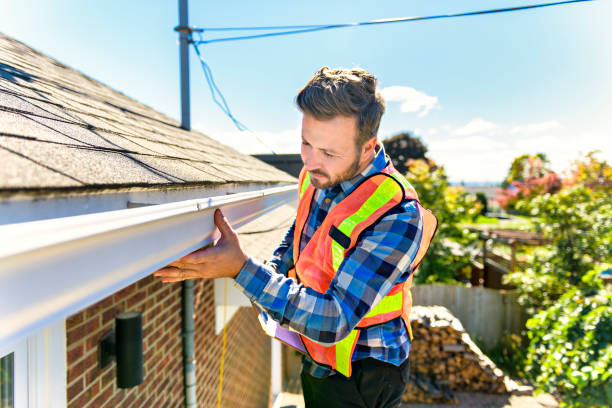A roof inspection is vital to ensuring your roof remains in good condition. It allows you to learn the current state of your roof, and scheduling it regularly will enable you to detect minor and potential issues before they become a real problem. However, homeowners don’t always practice this. Some put off the inspection until they notice something wrong with their roof.
Here’s a guide to help you learn more about the process of a roof inspection and better navigate dealings with roofing contractors. We’ll share what happens during an inspection, how long it takes, how frequently should you request it, and more.
What Is a Roof Inspection?
It is a thorough examination of your roof conducted by a professional. This includes checking its materials and components and assessing its overall health and lifespan. The objective is to determine if your roof is functioning as it should, and if it isn’t, the roofing specialist will provide the appropriate recommendations.
Homeowners typically request this inspection to determine whether their roof leaks or needs replacing. Inspections also take place to assess storm damage, for routine maintenance, and when buying or selling a property.
What Gets Checked?
- The Number of Layers Your Roof Has
This is the first thing that the roofer checks. If your roof is due for a replacement, this determines how many layers must be torn off. If there’s a leak, this is done to trace the source for repairs.
- Drip Edge
The roofer will check whether your roof has a drip edge, whether it’s installed correctly, and whether it’s working properly. A drip edge is installed at the roof edges to keep water away from the fascia and prevent it from going underneath the roofing components. Building codes require this, so your property will not pass a home inspection if it does not have one.
- Roof Decking Condition
Roof decking is the wooden foundation of your whole roofing system. The roofer will check if it is solid or soft and spongy underneath their feet.
- Roofing Material
The material, which makes up the bulk of your roof, will be inspected to see how much time your roof has left. Your roofer will also check for issues and any potential problems that must be addressed.
- Roof Penetrations
Anything that comes through your roof is referred to as roof penetrations. These include chimneys, gas vents, and skylights. During the inspection, they are checked to ensure they are fully sealed and leak-free to prevent water from getting to your home.
- Roof Flashing
This is a crucial metal component installed to prevent leaks in areas where the roof is positioned against something, such as a wall or chimney. The roofer will check that it has no rust and the metal still holds up.
- Gutters and Downspouts
The inspector will check for cracks, seams, or any drainage blockages. They will also look for standing water to assess if the gutter is tilted correctly and in the right direction.
- Attic
The roofer will check your attic space to see if it’s properly ventilated, as this affects your roof’s lifespan and energy bills. This is where they will also check the bottom of your roof decking for excess moisture and leaks.
Duration of the Inspection
On average, it takes around 1–2 hours. However, it could take longer depending on the purpose of the inspection, the size of the roof, how accessible it is, and its complexity. A storm damage assessment takes longer because of the documentation involved apart from the inspection itself. Inspections that aim to look or check for leaks could vary due to the source tracing and possible repairs, if the issue is minor.
How Often Should Your Roof Be Inspected?
A yearly inspection is recommended for routine maintenance. This will benefit you as it will maximize your roof’s longevity and help you save money from costly repairs. You could also do this twice a year to check how well your roof keeps up with the changing seasons.
Contact a Reputable Roofer Today To Book an Inspection
Now that you know what to expect during an inspection, it’s time to schedule one for your home to ensure your roof is in excellent condition. Reach out to a trusted roofer in your area who you can rely on for expert guidance, honest advice, and outstanding workmanship.

